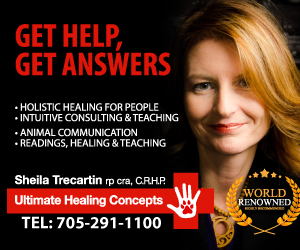Diana Gifford-Jones has had a long fascination with Japan and unique aesthetic of the Japanese reverence for all things in nature. So, she leaped at the opportunity to speak with Ann Martin, a member of her hometown community of Merrickville, ON, who shares that passion. Forest bathing, as it is known in Japan, is good for the soul. But so too, is it good for your physical health?
Ann Martin is a certified Forest Therapy Guide with the Association of Nature and Forest Therapy. Her passion for connecting to the natural world stems from her background as a public historian and community worker. Originally from the boreal forest, she now makes her home in the Great Lakes-St. Lawrence Forest Region on the traditional lands of the Anishinaabe and Haudenosaunee.
Diana: What is forest therapy and where did it originate?
Ann: The practice of forest therapy originated in Japan, where it is called shinrin-yoku. It means, forest bathing, or “taking in the atmosphere of the forest”. The Director of the Japanese Forest Agency coined this term in 1982 as a way to link forest visits with health. During the 1980s, as Japan industrialized becoming a technological society, people were developing medical symptoms that had to do with chronic stress. Researchers discovered that having people walk outside in the forest was beneficial to their health. A number of evidence-based research projects subsequently measured what happened to people when they walked in the forest. These studies documented the physiological effects of what walking in the forest does. The forest therapy we know in North America is inspired by shinrin-yoku and also weaves together several other wellness practices.
A forest therapy walk is a process of spending a couple of hours in the forest or out in nature and really slowing down. Walking slowly. Focusing on all five senses in order to encourage a connection with nature. The idea is not only to experience the psychological benefits of being in the forest, but also to have open psychological effects as well – like improved mood and feelings of wellness. Sometimes we’re not even aware of the subtle changes that happen when we allow ourselves to really experience a connection with the natural world.
Diana: How popular is it here in North America?
Ann: Forest Therapy is definitely gaining in popularity. In fact, since the Association of Nature and Forest Therapy started to train guides in 2012, over 1,100 forest guides have been training over fifty-five countries. Many organizations are promoting the idea of getting outside to improve mental and physical health. Around the world, governments and medical experts are encouraging health organizations to support people to spend time in nature. The National Health Service (NHS) in the United Kingdom and ParksRX in the United States are just two examples. In December 2020, the BC Parks Foundation, established PaRx, a Canadian initiative by health-care professionals who want to improve their patients’ health by connecting them to nature.
Diana: I haven’t heard about physicians prescribing walks in the forest. If spending even short periods of time in the forest can produce significant improvements in mood and outlook, then perhaps more doctors should write the Rx. How would you describe the healing element of being in a wooded environment?
Ann: Much of the Japanese research has been done around the Hinoki, or Cypress trees. When we are stressed, our bodies produce adrenaline and cortisol, hormones linked to heart disease, metabolic diseases, dementia, and depression. But as we spend time, particular with evergreens, we are being showered by piney-smelling volatile organic compounds (VOCs), also known as phytoncides, These chemical compounds have properties that decrease the production of adrenaline and cortisol and result in benefits such as lower blood pressure and improved heart rate variability.
Many of these Japanese studies have been replicated in other countries. Markers for adrenaline and cortisol drop significantly in all these studies.
Diana: Simply by breathing in and breathing out amid evergreens, we enjoy this effect?
Ann: Yes, and there’s more. Forest therapy stimulates our bodies to increase the production of white blood cells, including a special kind of white blood cell called natural killer cells. These cells boost the performance of our immune system considerably. We also know that there are significant restorative effects that report increased focus, enhanced creativity, improved mood and relaxation. Tests show better attention and memory after spending time in the forest.
When we are away from nature, we are asking our eyes and ears and our senses to function in an artificial environment, but our bodies have evolved living outside in the natural environment. We are coded to recognize natural lights, sounds, smells, and patterns. We are meant to be able to recognize the smell of the earth – for example, that smell you get after a rain. These are evolutionary responses that our bodies have to nature. One of the things happening when we go for a walk outside is that our eyes, ears and brains are simply not working as hard as at other times. We are back in our natural environment, and because our brain is not working as hard, we can relax. We often say we want to go for a walk to clear our heads. This rings true. It is restorative to go outside.
Diana: That’s fascinating. I suppose forest therapy depends on having a safe environment outside.
Ann: True. Not everyone finds comfort in all outdoor environments. A storm, for example, might provoke a flight response. Being able to sense danger is part of our survival mechanisms. But finding a spot where you feel safe and are able to slow down and relax can be really soothing.
Diana: So there are benefits to our bodies and to our minds. Anything else?
Ann: There’s a third major health benefit, after physiological and psychological effects. Research shows that when we connect with the land, we can experience a type of “soft-focus” or “state of awe” and are also likely felt more connected to humans and community. Forest therapy can invoke a state of awe which yields benefits in terms of compassion for others, more generosity, and higher acceptance of oneself. Researchers, for example, have documented that study participants who experience awe are more generous in their giving. They are more engaged, for example, in contributing to the collective group by, say, picking up litter outside.
Diana: I know I have more luck getting my kids to go for a walk if I can make the pitch to them when we are already outdoors.
Ann: That’s the truly transformative part. Nature can serve as a safe space for people to have conversations that might not occur otherwise. One of the unexpected benefits of forest therapy is the opening up of the mind. People think when they are going on a forest therapy walk that they are just connecting with the land, and that is certainly true. But profound things can happen between people when they are out on the land. We know that organizations such as Outward Bound and others, specialize in taking people on extended trips into the wilderness, that remarkable transformations can occur among people spending prolonged periods of time in nature.
Diana: It sounds like a prescription community leaders should be able to write. You’ve become certified in forest therapy? What’s involved in the training? How do you anticipate putting your knowledge to work?
Ann: I am a certified Forest Therapy Guide through my training by the Association of Nature and Forest Therapy, the longest-standing certification body in North America. My six months of training allows me to facilitate safe, gentle walks in the forest designed to help people slow down, get in touch with their senses, and have a connected experience in nature.
At the Association of Nature and Forest Therapy, we have a saying: the forest is the therapist; the guide opens the doors. My role is to help people slow down and experience the forest. We are used to using our big prefrontal cortexes for reasoning, judgement, and decision-making. One of the benefits of a walk with a guide is that it allows you to turn down the thinking part of your prefrontal cortex so you can turn into what your body is seeing, feeling, hearing and tasting.
When was the last time you thought to stick out your tongue and taste what’s in the air? I offer playful invitations to people and give the permission to engage with nature in ways that either do not come naturally or may have been forgotten — even for people who spend a lot of time out of doors. For many, it’s hard to be outside “doing nothing.”
Diana: You make a good case for doing forest therapy with a guide, so that you appreciate these things more explicitly.
Ann: As part of forest therapy walks, I offer a series of invitations. Even people who are on familiar trails can be quite astounded that they’ve never noticed things like woodpecker holes in trees they’ve walked by countless times, or that they’ve not paid attention to the smell of the leaves on the forest floor. It’s because in our society we are thinking about destinations. We are trying to get from point A to point B, or we are out on a nature walk where we are trying to find and identify a plant or a butterfly or a bird. There is so much to see when we slow down and engage with nature with all of our senses.
Diana: Can you imagine if even a fraction of the resources spent on clinical treatment of disease was spent instead on motivating people to go outdoors?
Ann: In Western medicine, we aim to treat things that have become problems. What if we switched our perspective to ask, what do we need to do to be well? I think being outside in nature is one of those practices. Call it preventative medicine if you will. I prefer to think of it as just healthy living. This is like brushing your teeth, hugging the ones you love, eating well, taking the time to rest and doing other daily practices that contribute to your wellbeing.
It doesn’t have to be rugged nature either. City parks and green spaces are really important for all of us to keep well, certainly during this time of the pandemic when so many people have been confined to indoor spaces. Those city parks are crucial for people’s wellbeing. Also, we need to think about how we design hospitals, prisons, schools and other kinds of infrastructure such that they incorporate green spaces.
Diana: Parks are one thing, but forests are another and it is rare to find a sizable forest in a city. Can you do forest therapy in a city?
Ann: Sure. The trick is to draw your attention to nature wherever it occurs. So even going to your local park, or arboretum, or a neighbour’s garden will do. You can get in touch with nature even if you stop to look at a dandelion growing through a crack in the sidewalk. Look at a weedy area beyond a parking lot, and you’ll be amazed how much is going on there. Having houseplants or potted plants on a balcony can be sufficient, or even spending some time with a pet on your lap. When was the last time you opened your windows in a rainstorm and smelled the quality of the air that comes into the room? All of these things can take place in an urban environment.
Diana: In your experience, is forest therapy better geared for the young or the old?
Ann: All ages can benefit from spending time outdoors and one of the aspects that I have found most compelling is the multigenerational dimension of forest walks. Often children provide that playful, unfiltered enthusiasm for engaging with nature and older people bring memories of certain plants or what their parents or grandparents taught them about those plants. The young and the old interact on these walks in ways that yield the physiological benefits of being outside while also sharing stories and reinforcing human connections.
Diana: I know that you have experience working with Indigenous communities, and I wonder if you think forest therapy might be a practice that could bring all Canadians a little closer together through learning of Indigenous ways.
Ann: Indigenous peoples have always had a close relationship with the land and with nature. In a pre-industrialized world, all people of all cultures relied on the land, for their livelihoods and especially for medicines. Indigenous peoples have traditionally cultivated that spirit of connection to the land, understanding not just what the land has to offer, but importantly being in a reciprocal relationship with the nature, understanding the abundance of the land and living in relationship with it. Their ability to see humans as a part of nature, rather than being apart provides rich models that all of us can learn from.
Diana: Ann, I so very much enjoyed and benefited from my recent experience with you on a guided walk. I look forward to many more and thanks so much for speaking with me.
Ann: My pleasure.
For readers interested in learning more about forest therapy, please see the following resources:
https://www.natureandforesttherapy.earth/about/science









